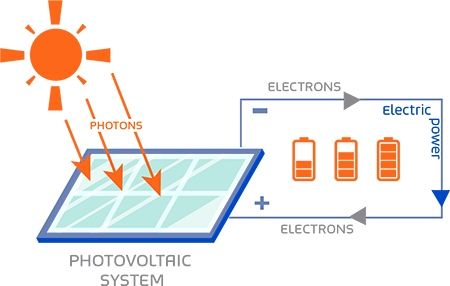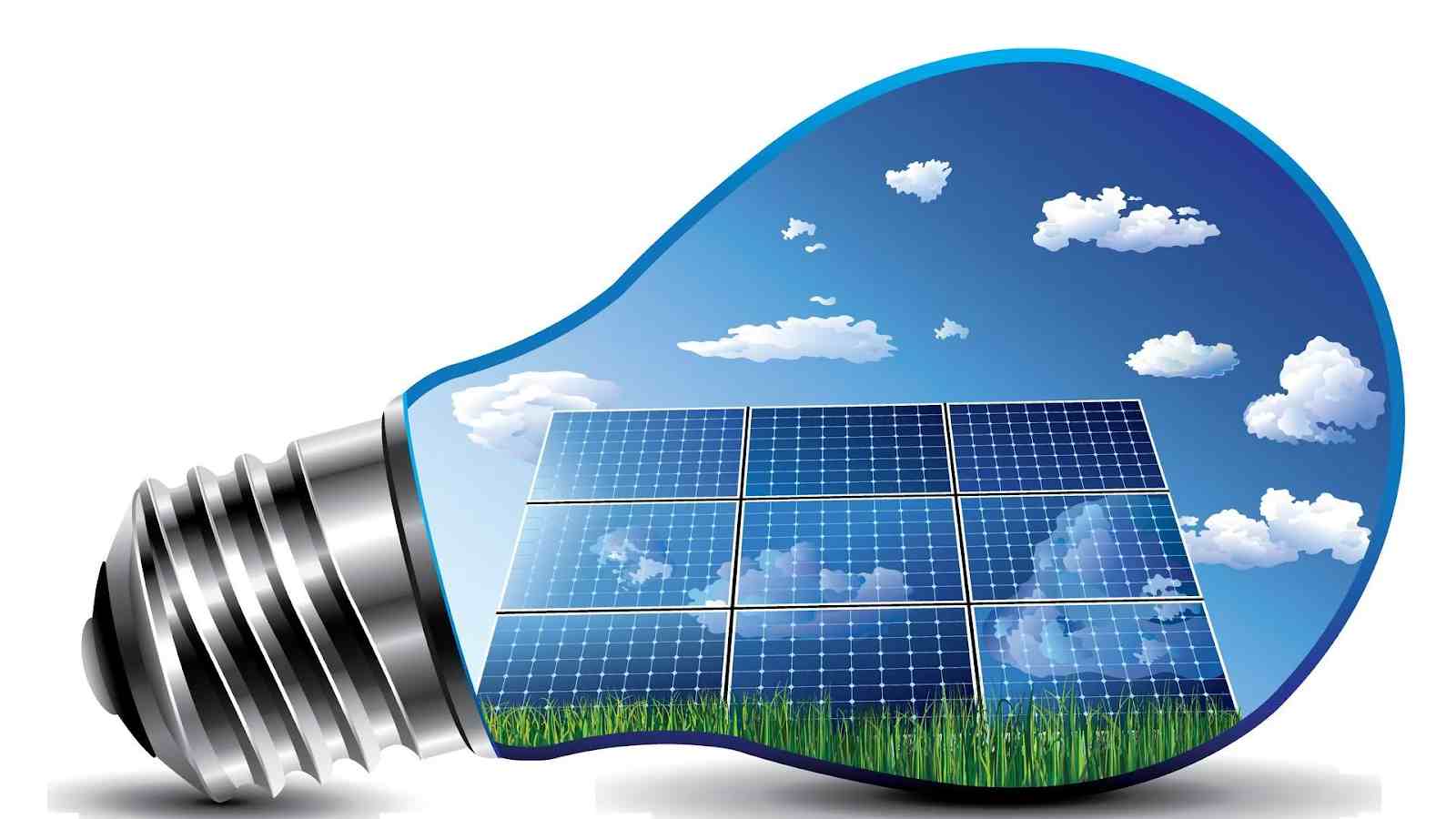Solar Energy Conversion: The Beginner's Guide

Overview:
Achieving carbon neutrality has become a tough challenge and task for global civilization in the battle against climate change. Meanwhile, this is a fantastic chance for decarbonization, climate risk mitigation, and to accelerate the transition to a renewable energy future. Hopefully, a plethora of future-oriented "dark technologies" will quickly arise and expand. Solar energy conversion goods, in particular, have entered current life and have become a vital critical link in the low-carbon cycle and green growth. A great deal of work has gone into constructing a comprehensive sustainable system based on solar energy conversion, and it is widely agreed that developing advanced materials is the foundation for achieving high-efficiency, low-cost solar energy conversion, and usage.
Solar energy conversion systems based on silicon-based semiconductors have been widely employed all over the world in recent years, and photovoltaic and artificial photosynthetic systems using conventional materials and architectures have grown increasingly mature. However, because of the significant pollution created by crystalline silicon modules during the manufacturing process, as well as the relatively poor theoretical conversion efficiency of silicon-based semiconductors, a number of unique photovoltaic materials and technologies have been proposed. Organic and perovskite solar cells, in particular, have gotten a lot of interest. Since the solar spectrum's receptive range expanded from ultraviolet to visible around the turn of the century, the sun's photosynthetic activities have piqued the interest of researchers in physics, chemistry, materials, and energy. Because of the ongoing development of catalytic theory, the rising number of material systems, the increase in quantum efficiency, and the expansion of the application range, photosynthesis has become a major area of catalytic chemistry and energy materials.
Principle of Solar Energy Conversion:
The sun emits a massive amount of radiation. Sun radiation may be transformed into various types of energy using a variety of techniques. Sun radiation may be directly converted to electricity, transformed to heat, and used in biochemical activities. It can also be used directly for tanning if the risks are understood. The photovoltaic (PV) effect allows sunlight to be directly transformed into energy in solar cells. PV conversion will only occur in a device that exhibits two required characteristics,
First, a solar cell must collect solar radiation and convert the heat energy of the sun into chemical energy within the device. When light is absorbed, electrons are stimulated to higher energy levels, allowing chemical energy to be temporarily stored. In an electrical potential, excited electrons act as charge carriers (current).

Second, the electrical resistance of a solar cell must be asymmetric. This creates an electric potential (voltage) across a device under solar light, which is determined by the chemical energy stored in the electron population. A solar cell can provide meaningful electrical work to load resistance in this way.
Types of Solar Energy Conversion:
The Photovoltaic Effect: One of the most common types of solar energy conversion is the direct generation of electricity. The photovoltaic effect is a method of converting daylight radiation (photons, light particles) directly into electricity (electrons, electricity particles). Solar panels are widely utilized in both households and utility-scale power plants to generate solar energy. Corporations and research institutions are looking into better ways to generate more cost-effective solar panels. To get a higher output of power, large electrical power plants employ mirrors or lenses to focus more solar radiation on solar panels. The sun is tracked by the mirrors (or lenses) as it moves across the sky.
Solar Thermal: The greenhouse effect uses solar radiation to convert solar radiation into thermal energy (heating water or air). Sunlight of a visible wavelength passes through a transparent layer (glass or plastic) before being absorbed and heated by a black layer (black-coated material). The absorbed energy in the infrared wavelengths (what we humans perceive as heat) is directed toward the glass layer by the black sheet absorber. However, because glass is not infrared transparent, the heat is stored and can be transferred to water or air.
Solar thermal principles are employed in solar hot water heaters, solar pool heaters, and solar space heating for residential energy applications. Solar energy is used to produce steam, which is used to drive steam electrical generators at high temperatures and pressures.
Utility Scale Power Plants: Solar power generators for home use are generally under 5 kW. Solar power generators in public buildings (schools, public, and government offices) and corporate offices are typically under 50 kW. Solar electric panels with a capacity of up to 50 kW are the market leaders. Solar plants with an output power ranging from 100 kW to 1 MW are common in communities that generate their own electricity, and they are usually paired with wind turbines and small steam turbines.
Solar energy is used in utility-scale power plants in the form of optical concentrated solar (photoelectric technology) or heliostats. Heliostats are sun-tracking mirrors that reflect sunlight onto a central collector. Heliostats are often constructed in a circular pattern around a tower. The collector is positioned on the tower and produces high-temperature, high-pressure steam, which is used to power a steam turbine.
Result of solar energy conversion:
Electricity production:
Solar cells can directly convert solar energy into electricity (photovoltaic cells). When light contacts the junction between a metal and a semiconductor (such as silicon) or the junction between two separate semiconductors, a tiny electric potential is created. A single solar cell generally produces only approximately two watts of electricity. Hundreds or even thousands of kilowatts of electricity may be created in a solar electric plant or a big domestic array by connecting vast numbers of individual cells together, as in solar-panel arrays. Most modern photovoltaic cells have an energy efficiency of only 15 to 20%, and because the intensity of solar radiation is low, to begin with, massive and costly assemblies of such cells are required to generate even small amounts of electricity.
Small photovoltaic cells that run on sunshine or artificial light have found widespread usage in low-power applications such as calculators and watches. Larger units have been used to power distant water pumps and communications equipment, as well as weather and communications satellites. Traditional crystalline silicon panels and developing thin-film solar cell technologies, such as building-integrated photovoltaics, maybe put on roofs by homes and businesses to replace or supplement traditional power supplies.

Concentrated solar power plants use concentrating, or focusing, collectors to focus sunlight from a large area onto a tiny blackened receiver, significantly increasing the light's intensity and producing high temperatures. Arrays of well-aligned mirrors or lenses can concentrate enough sunlight to heat a subject to temperatures of 2,000 degrees Celsius (3,600 degrees Fahrenheit) or higher. This heat may then be utilized to power a boiler, which creates steam for a power plant powered by a steam turbine electric generator. For direct steam production, the moveable mirrors may be set to focus huge volumes of solar energy onto blackened pipes through which water is pumped and thereby heated.
Thermal Energy:
The heat absorbed by the sun is both intense and radioactive. The sun bombards the Earth with billions of charged nanoparticles that contain enormous amounts of energy. This heat may be utilized to heat water, heat a room, cool a room or generate process heat. Many steam-generating systems have evolved to use sunlight as a major source of heating feed water, which has considerably boosted the overall efficiency of boilers and many other kinds of waste heat recovery systems. Solar cookers cook, dry, and pasteurize using sunshine. Solar distillation is utilized in water treatment operations to provide clean drinking water, and it has been an immensely important participant in delivering relief efforts to nations in need by using growing technology.

The goal of solar thermal technology is to convert incoming solar energy into useful heat. Solar heat conversion requires the use of energy collectors, which are specifically built mirrors, lenses, and heat exchangers that concentrate the radiant energy from the sun and transfer it to a carrier fluid. The fluid heats up as it goes through the solar collector. Water/steam, oil, or molten salt are common heat transport fluids. The fluid is then delivered to the heat engine, which converts heat to electricity.
Economic Development:
The conversion of solar energy has the potential to be a highly cost-effective technique. It is less expensive than non-conventional energy sources. Solar energy applications serve to boost employment and the growth of the transportation and agricultural sectors. Due to economic factors, solar systems are becoming less expensive and more widely accessible in nations where energy demand is high but supply is limited. A 1 GW solar power station can generate about ten times the amount of energy as a fossil fuel combustion power plant that would cost twice as much to build. Solar power plants are expected to be the industry's leader in energy generation by 2050.
Rural Energy Access:
Solar energy conversion has the potential to have a wide range of beneficial societal consequences, particularly in rural communities that previously lacked grid-based electricity access. Solar-electric conversion is the fastest increasing source of energy acquisition in many off-grid settings. This is particularly true at latitudes 45° north or south of the Equator, where solar irradiation is more consistent throughout the year and the majority of the developing world's population resides. From a health standpoint, solar home systems can replace kerosene lamps (commonly found in rural areas), which can cause fires and emit pollutants such as carbon monoxide (CO), nitric oxides (NOx), and sulfur dioxide (SO2) that degrade air quality, impair lung function and increase the risk of tuberculosis, asthma, and cancer. Solar energy availability has been found in such places to save rural households the time and money required to acquire and transport kerosene, enhancing productivity and prolonging business hours.
These communities obtain energy independence, which means they are no longer dependent on a third-party electrical supplier, in addition to energy availability. The notion of energy independence is very new; during the overwhelming majority of the twentieth century, energy evaluations were primarily technical or financial in nature, with little consideration for social consequences. According to research from the 1980s, access to renewable energy would encourage principles that would benefit society as a whole rather than just individuals. While some scholars claim that historically, individuals in control of energy sources have created societal hierarchies, this sort of study has become less "radical" and more popular with the emergence of technology that permits solar energy conversion.

Community Solar:
Solar energy conversion may have an influence on whole communities as well as individual consumers. The traditional paradigm of independent, non-connected rooftop installations is being supplanted by community-sized solar microgrids in an increasing number of areas throughout America. The concept of "community solar" originally gained popularity as a result of energy storage concerns. Because the widespread production of lithium-ion batteries and other storage technologies lags behind the progress of rooftop PV installations as of 2018, a major barrier to a nationwide shift to rooftop solar energy generation is the lack of a dependable, single-home storage system that would provide contingencies for night-time energy use, cloud cover, curtailments, and blackouts. Furthermore, because of the smaller project scope and lack of cash flow, financing solar systems for single-family houses may be more difficult to achieve. A feasible alternative is to link blocks of houses in a community microgrid, which uses more proven large-scale storage systems, decreasing obstacles to solar adoption. A microgrid "web" is created in certain situations by linking each autonomous rooftop PV home to a larger storage facility. Other ideas, particularly when rooftop installations are not feasible, include a big combined solar array and a storage facility on a neighboring field. This kind of installation also has a social effect by making solar energy economically feasible for multi-family houses and traditionally low-income communities.
Grid Defection:
A possible socioeconomic disadvantage of solar energy conversion is that it threatens the business paradigm of electric utilities. The economic sustainability of regional "monopoly" utilities in the United States is predicated on a massive aggregation of local consumers who balance out each other's changing loads. As a result, the extensive installation of rooftop solar systems that are not linked to the grid endangers the stability of the utility market. Grid Defection is the name given to this phenomenon. The strain on utilities is worsened by old grid infrastructure that has failed to adjust to the new difficulties brought by renewable energy (mainly regarding inertia, reverse power flow, and relay protection schemes). However, other experts argue that, with the increasing frequency of natural catastrophes (which destroy key grid infrastructure), solar microgrid construction may be required to assure emergency electricity supply. This focus on disaster preparedness has greatly boosted the off-grid energy sector in recent years, particularly in places prone to natural catastrophes.
Environmental Impacts:
Installations may disrupt and/or move natural ecosystems by covering huge tracts of land and increasing habitat fragmentation. Solar installations erected on Native American reservations have disturbed traditional customs and have also had a harmful influence on the surrounding ecosphere.
Outlook:
The Sun has vast untapped potential to meet our ever-increasing energy demands. The high cost of solar energy in comparison to the cost of fossil fuels is a barrier to broader usage. However, this discrepancy will narrow as the cost of fossil fuels rises, as will the expense of mitigating their effect on the environment and climate. The cost of solar energy is directly proportional to the poor conversion efficiency, the low energy density of solar radiation, and the currently necessary expensive materials. The development of materials and ways to increase solar energy conversion is largely a scientific challenge; basic knowledge breakthroughs should allow for significant advancement. There is lots of potential for development since photovoltaic conversion efficiencies for affordable organic and dye-sensitized solar cells are now about 10% or less, the photosynthetic conversion efficiency is less than 1%, and the highest solar thermal efficiency is 30%. The theoretical limitations imply that we can do a lot better.
Solar conversion is a relatively new science. Its rapid expansion started in the 1970s, fueled by the oil crisis, which exposed the pervasiveness of energy in our personal, social, economic, and political lives. In contrast, fossil-fuel research has evolved over the course of more than 250 years, spurred on by the Industrial Revolution and the promise of plentiful fossil fuels. The evolution of the steam engine, for example, is inextricably linked to the study of thermodynamics. The Carnot cycle, the mechanical equivalent of heat, and entropy all played pivotal roles in the evolution of thermodynamics and heat engine technology. Solar-energy research has an equally bright future, with nanotechnology allowing for the discovery of the guiding principles of photonic energy conversion and their application in the creation of cost-competitive new technologies.

